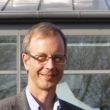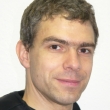11:30 - 13:00 Computational aerodynamics
Turbine technology


Room: Hall G2
The session deals with aerodynamics, in particular computational aerodynamics. The session investigates a typical enginering blade element momentum (BEM) aerodynamic model, and demonstrates the merits of less empiric but computationally more comprehensive CFD modelling for yawed conditions and for tip vortex breakdown. We will also discuss the validation by 2D wind tunnel tests for high Reynolds numbers and how to use aerodynamics computations to analyse the effect of protuberances on blades.
You attended this session?
Learning objectives
- Understand and assess the limitations of engineering computational aerodynamics tools versus CFD;
- Understand opportunities and challenges of using CFD for aerodynamic computations;
- Understand uncertainties of wind tunnel tests for validation of computational eaerodynamics;
- Understand how protuberances on blades may affect performance.
This session will be chaired by:


Presenter

Co-authors:
Bernhard Stoevesandt (1) F Hamid Rahimi (2) Bastian Dose (2) Joachim Peinke (2)
(1) Fraunhofer IWES, Oldenburg, Germany (2) ForWind, University of Oldenburg, Oldenburg, Germany
Presenter's biography
Biographies are supplied directly by presenters at WindEurope Summit 2016 and are published here uneditedAfter my diploma in physics at the University of Bremen, i worked as freelancer with x-ray lenses. In 2002, i joined the university of Oldenburg in wind energy power forecasting. In 2004, i started research on turbulence in wind energy aerodynamics at ForWind finishing a PhD 2010. I am heading the department of Aerodynamics, CFD and stochastic Dnamics at Fraunhofer IWES based in Oldenburg since 2011.
So far i participate in the IEA Wind Task 29 and 31 projects focusing on wind fields and aerodynamics. A main interest of the work lies in the development of advanced techniques for aerodynamic and site simulations for wind turbines. This includes automated wind farm layout optimization, meso-scale simulations and coupling to micro-scales, improvements of aerodynamic concepts, aero-acoustics and the effects of turbulent flows. Currently i am the main coordinator of the German „Inflow-Noise“ project, and participant in the EU-project AVATAR and NEWA.





Follow EWEA on: